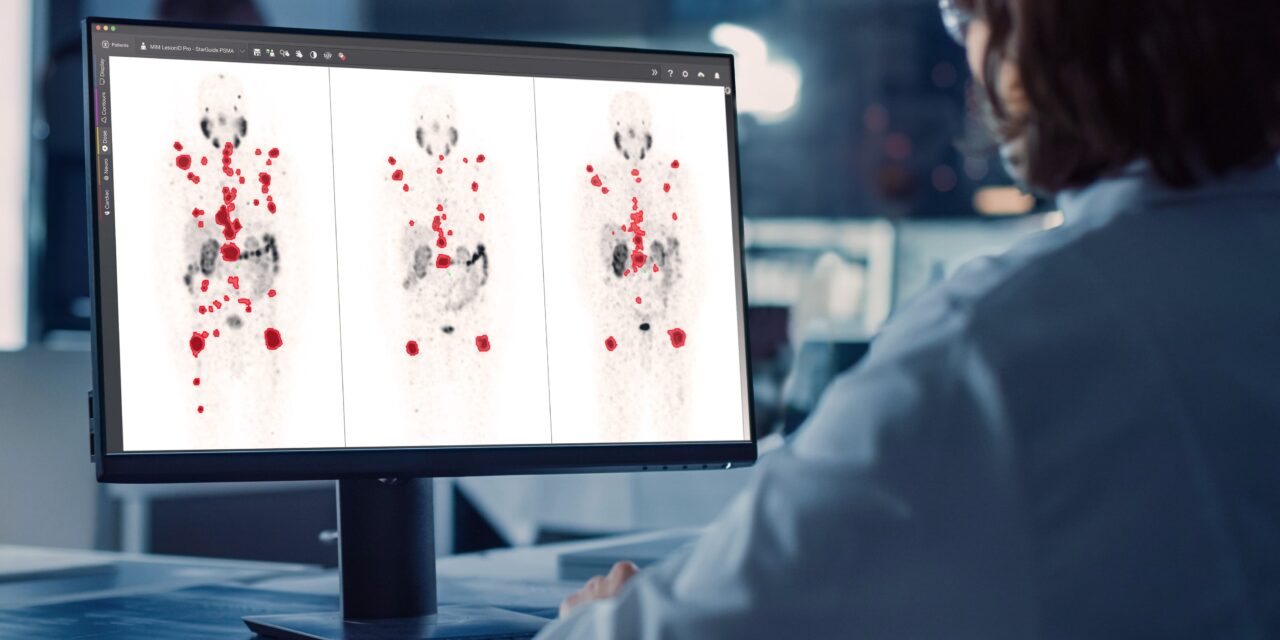New technologies include automated tumor burden software, compact cyclotron, and AI-powered SPECT/CT and PET/CT systems.
At the Society of Nuclear Medicine and Molecular Imaging (SNMMI) Annual Meeting, GE HealthCare is highlighting new technologies designed to support precision care in theranostics and molecular imaging.
The company’s latest innovations include AI-powered software for tumor burden analysis, new imaging systems, and radiopharmaceutical tools intended to streamline workflows and support personalized treatment planning.
“Every day counts when it comes to cancer care. The latest theranostics solutions will help our care teams more quickly and easily keep tabs on patient readiness and reduce patient coordination time—freeing up more time for clinicians to focus on direct patient care,” says Erik Mittra, MD, PhD, professor of diagnostic radiology in the at Oregon Health & Science University, in a release.
Among the new releases is LesionID Pro, a version of GE HealthCare’s MIM Software featuring automated, zero-click pre-processing. The tool is designed to help physicians reduce time spent on manual lesion segmentation and image registration when analyzing whole-body tumor burden. According to GE HealthCare, the software improvements aim to support therapy response monitoring and more efficient reporting.
Molecular imaging—such as positron emission tomography (PET) and single photon emission computed tomography (SPECT)—plays a central role in theranostics by helping clinicians monitor disease and guide treatment. GE HealthCare’s updates to LesionID Pro aim to address common challenges in this space, including time-consuming manual processes. The latest version includes algorithm improvements that provide whole-body tumor volume data, which physicians can review and finalize using newly designed tools.
Theranostics-Enabling Solutions on Display
Also on display at SNMMI, as part of GE HealthCare’s portfolio of theranostics-enabling solutions, are the following innovations:
- MINItrace Magni: GE HealthCare’s newest cyclotron technology, designed with a small footprint (about the size of a commercial refrigerator) and the goal of providing an easy-to-site, easy-to-install solution for the reliable, in-house production of commercial PET tracers and radiometals, including Gallium-68, used in diagnostic imaging to support personalized care plans.
- Omni Legend: A PET/CT system designed to reduce dose by up to 40% while maintaining image quality. The system is intended to support growing demand for high-performance PET/CT in theranostic applications.
- StarGuide: A digital SPECT/CT system with 12 CZT detectors that offers 3D imaging and short scan times. The design supports lesion detection, therapy monitoring, and high patient throughput.
- Aurora: A dual-head SPECT/CT system featuring a 40 mm CT detector and dose reduction capabilities. The system is designed to provide image quality and operational efficiency in hybrid imaging environments.
- Theranostics Pathway Manager Tile: An application available through GE HealthCare’s Command Center software. The tool is designed to help clinical teams coordinate the theranostics care pathway by tracking patient readiness for therapy and consolidating information from multiple sources. Oregon Health & Science University will be an early adopter.
“Precision care is the future of oncology—and theranostics is at the heart of that future. The integration of advanced imaging and AI-powered software is accelerating the adoption of theranostics in clinical practice,” says Shyam Srinivas, MD, PhD, chief of nuclear medicine, associate clinical professor, Department of Radiological Sciences, University of California, Irvine, in a release. “With tools like GE HealthCare’s Omni Legend, StarGuide, and MIM software at our disposal, we now have the ability to visualize disease with great clarity, quantify tumor burden efficiently, and make fast, informed decisions.”
Photo caption: LesionID Pro
Photo credit: GE HealthCare



